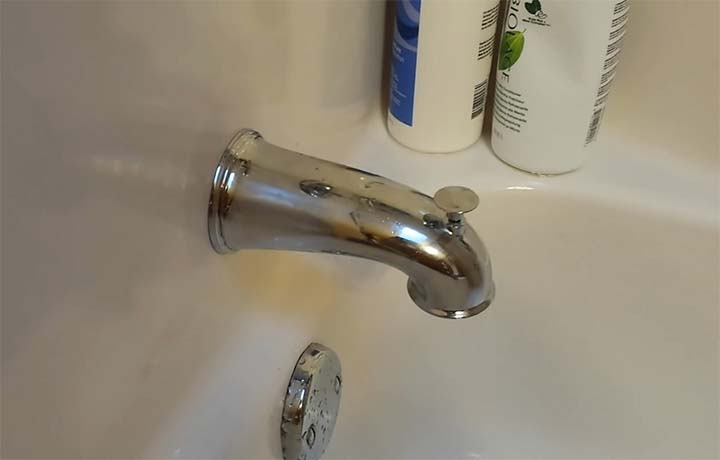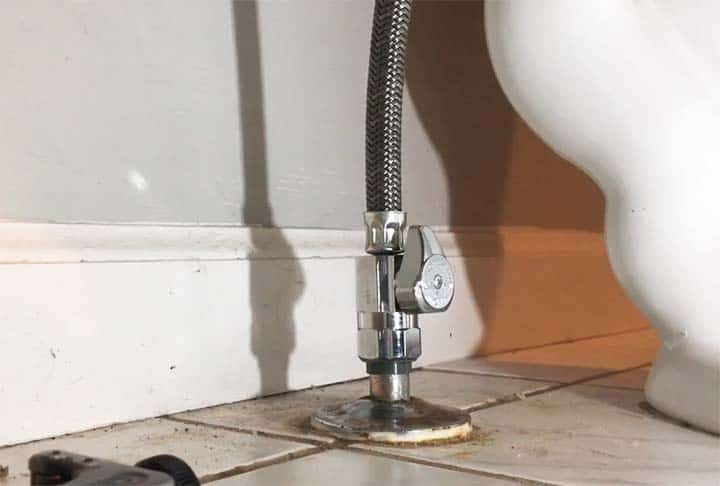A kitchen sink works superbly with the dishwasher. The combination makes your kitchen management easy and comfy. However, you might fail to install the dishwasher with the sink if you have a small kitchen with improper spacing.
You don’t need to worry at those moments since it is possible to use a dishwasher without the sink. Your dishwasher management and draining get easy as you learn how to plumb a dishwasher without a sink.
You will need a dishwasher island to plumb it without the sink. Also, you will have to collect it with the draining and water lines to help it operate appropriately. Finally, you need to consider the sink drain distance, electricity options, ventilation, and supply lines for the dishwasher.
So, let’s jump into the ways of dishwasher drain without sink processes.
How To Plumb A Dishwasher Without A Sink
You can still plumb it when you don’t have the sink for installing the dishwasher. However, you will need to work a few steps more to complete the plumbing process. You need to connect the dishwasher with the P trap separately and attach it to the tee branch.
Also, you will have to connect the dishwasher to the air gap before running it to the drain line. In the following steps, we will discuss the entire process.
Step 1: Tool Requirements
You will need a few important items when you plan for dishwasher drain installation without a sink. The draining system will run without the sink. The alternative way can be difficult. Also, you will need the following things for the draining installation.
- P-trap
- Braided supply hose
- Tee branch
- Air gap
- Plumbing tape
- Screwdriver
- Allen wrench
Step 2: Connect the P trap
When everything is ready, you will need to connect the P trap to the dishwasher. For this, attach the longer tailpiece of the dishwasher with the p trap. You will have to secure the connection with the slip nuts using a screwdriver.
You will need to choose the right-sized P trap. Thus, look at your dishwasher drain size and choose the p trap accordingly. When you have the right P trap, you must connect it with the longer tailpiece. Once securing the connection, use Teflon or plumbing tape to cover the connection point. Also, it would help if you used a rubber washer between the p trap and tailpiece to make the entire system watertight. The plumbing tape will also extend the lifespan of the connection. It stops mould and residue growth around the connecting point to make your dishwasher maintenance easy.
Step 3: Plumbing the P trap with the tee branch
The dishwasher tee is located under the dishwasher. It allows the dishwasher to extend the drain attachment to connect with the main drainage system of your home. After connecting it to the dishwasher, you will have to connect it to the other side of the p trap.
Now, you should start working with the drain hose of the dishwasher. You will need to connect it with the inlet of the air gap before draining it finally. The inlet of the air gap is usually the larger side. So, you should have no problem finding it.
Step 4: Plumbing with the main drain
Now, it’s time to connect the main draining line to the dishwasher. The drain hose will always run through the air gap or high loop attached to it first. Once it goes through the loop or air gap, it comes back to connect with the draining line.
Since there will be no sink with the dishwasher, you will not have a garbage disposal. So, you need to install the plumbing system without the garbage disposal. You will need a branch fitting to connect the dishwasher tailpiece to the drain line.
Once you have connected it with the draining line, you need to secure the point. We suggest you use a metal clamp and plumbing tape to secure it. If you don’t attach the clamp, the connection may soon become loose and need repairing.
Step 6: Lay the water supply line
You will have to connect the dishwasher to the water supply line. You will require the hot water line for this. So, you may easily connect the dishwasher with an extended hose to the nearby hot water faucet or water supply point.
- Find the water inlet valve of your dishwasher. Connect the braided steel water supply hose with the inlet valve. Ensure that it can accommodate the hot water supply without any damage.
- Connect its other end with the nearest hot water supply shut-off valve. The water supply tube is the same as the one you use with kitchen or bathroom sinks.
- To get the right-sized dishwasher hot water line hose, you need to measure the distance between the dishwasher and the hot water supply line.
- You will also need a 90-degree elbow to hook the supply hose to the dishwasher. It is known as brass fitting because of its brass material. Ensure that you get a good-quality brass fitting so that it doesn’t get rust and corrodes soon.
Step 5: Check the electrical and venting system
The dishwasher’s performance depends on the proper electrical line and venting system. You may attach the electrical wiring if you are confident enough. A similar is true for the venting system. But, we would recommend you call a professional to fix the electrical wiring and venting system for the dishwasher.
It is crucial because a wrongly mounted dishwasher electrical system may cause disaster to your plumbing system. It may even hurt you. Thus, you mustn’t compromise the plumbing system and the electrical wiring of your dishwasher.
Things to Consider When Installing The Dishwasher Without A Sink
Since you don’t have the sink, you will have to generate a separate supply line and drain line. We have discussed the plumbing system of the dishwasher without a sink. But when you look to install a dishwasher drain without a sink properly, you need to consider a few important facts.
Check the supply lines carefully:
There will be no sink to attach the dishwasher for water supply; you will need to run separate supply lines with the dishwasher island. The island dishwasher supply line plumbing will require you to access underneath the cabinet.
Also, as we have mentioned, you will need to run the hot water line. Thus, connecting the supply line with the water heater is necessary. However, you may choose dishwashers to heat the cold water to clean off your dishes. It helps connect the dishwasher with the readily available cold water supply line.
Determine the drain distance:
You also need to measure the distance between the dishwasher and the drain pipe system. Also, it is possible to connect an island dishwasher with the sink drain at a distance. When you measure the distance accurately, you can choose the right drain and water supply pipes length.
However, when you choose the drain pipe and its length, know that the dishwasher ejects the water forcefully after use. The home appliance does so with the discharge pumps. So, you will need a lengthier hose than the actual distance of the dishwasher to the draining point to handle this forced pressure.
Consider the electricity system and ventilation:
The electrical outlet of your dishwasher is a key consideration. It should be rated at 20 Amps to handle the required electricity of the dishwasher. Also, try to connect the electrical wiring with the dedicated outlet with GFEC grounding for safety.
Finally, consider the ventilation system. You must vent the drain pipe so that the water flows through the hose with proper pressure. It helps the used water to drain smoothly. You will need an additional island loop vent with the island dishwasher and without the sink. It loops under the dishwasher countertop and supplies maximum air to the draining pipe.
Frequently Asked Questions
Can you hook up a dishwasher without a sink?
Yes, you can install a dishwasher without the sink. You will need to mount some extra items, such as an additional water supply and a drained line. However, you should hire a professional for the right electrical outlet and ventilation.
Can the dishwasher drain directly into the waste line?
Although building codes won’t restrict you from directly connecting the dishwasher with the waste line, it isn’t practical. It can block the waste line with the food residues.
Can you run a dishwasher without a sink?
Yes, you can run a dishwasher without the sink. You can follow our suggestions and instruction guidelines in the above section for plumbing the dishwasher without the sink.
Conclusion
Now you should be able to plumb a dishwasher without a sink. The plumbing system of the dishwasher isn’t as complex as you think. However, you need to have minimum plumbing skills. Also, you should call a professional plumber for the venting system to ensure smooth water flow. It is crucial because an improper venting or electrical outlet installation can be accidental.
I am James Martin, An professional plumber with more than 16 years of experience. The main purpose of my writing is to share my experiences of helping others. Be with me and explore bathroom plumbing, installation, cleanness ideas, and many more.




